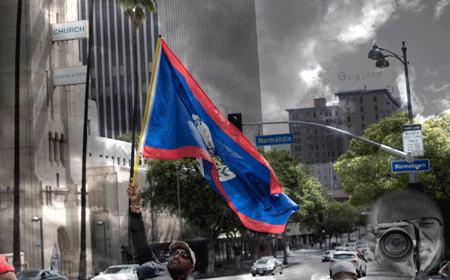It is said by many progressive leaders of the Caribbean, like the late Michael Manley of Jamaica, Maurice Bishop of Grenada and Fidel Castro of Cuba, that independence on paper given to nations like Belize, the former British Honduras, by their British colonial slavemasters, was not really true independence at all. They say that such fabricated and false sense of independence was not really won unless through the overthrow of the oppressive colonial masters, as it was in Haiti that became the first independent nation in the Western Hemisphere even before the great United States. And that Haiti overthrew its brutal and oppressive slave and colonial masters in one of the most still talked about revolutions called, “The Haitian Revolution”.
Belize’s independence appeared to have not been won in that way, but through the struggle of a nationalist movement in the 1950s that cannot be accredited just to the one man whom Belizeans called the “Father of the Nation,” George Cadle Price, and his People’s United Party (PUP) who dominated politics in Belize up to 1984. But also through the forgotten patriots and heroes of Belize like the legendary Antonio Soberanis and his revolutionary trade union movement of the 1930s, the anti-Anglo Guatemalan Claim patriot and revolutionary Philip Wilberforce Goldson, the revolutionary Mayan leader Marcus Canul, and the Garifuna cultural leader T. V. Ramos.
Belize’s independence would not have been won either if it was not for the steadfast and strong spirit of the people of Belize and their deep resolve that stood their ground from north, south, east and west in defending the sovereignty and territorial integrity of the country through countless battles of resistance in the streets of Belize City, the cane fields of the Orange Walk and Corozal Districts, to the orange groves of the Pomona Valley in the Stann Creek District, and onwards to the 1859 established borders at the Sarstoon River in the southern District of Toledo.
This independence on paper that Belize celebrates every year is really just an image of what it appears to be rather than the one which would have made the nation come into its own independency in full productivity rather than on dependency on foreign imports, labor, and financial aid. Then how can such a nation explain what its independence truly means if it is still dependent on the same exploiters that once plundered all its natural resources before and are continuing to do so today?

In the moment of Belize’s so-called independence that it had commemorated on September 21, 2017, there is a burning anger that still engulfs the mind and the soul of its people as to whether the country has made any real progress since September 21, 1981. It is a kind of hunger and thirst that still lingers on for that satisfaction that was to come through a promise that reminds the Belizean people, both at home and abroad, that is embellished in its national anthem in emitting the words of hope: “this tranquil haven of democracy … no tyrants here linger, despots must flee?”
This promise of independence that appeared was never really any “just objective” but rather a cry in the wilderness from the Belizean people to be free at last. It is a spiritual awakening of a call to the God in the heavens to be truly free at last from poverty, hopelessness and despair. It is a cloudy Belizean independence that is a reflection of the state of its nation.
